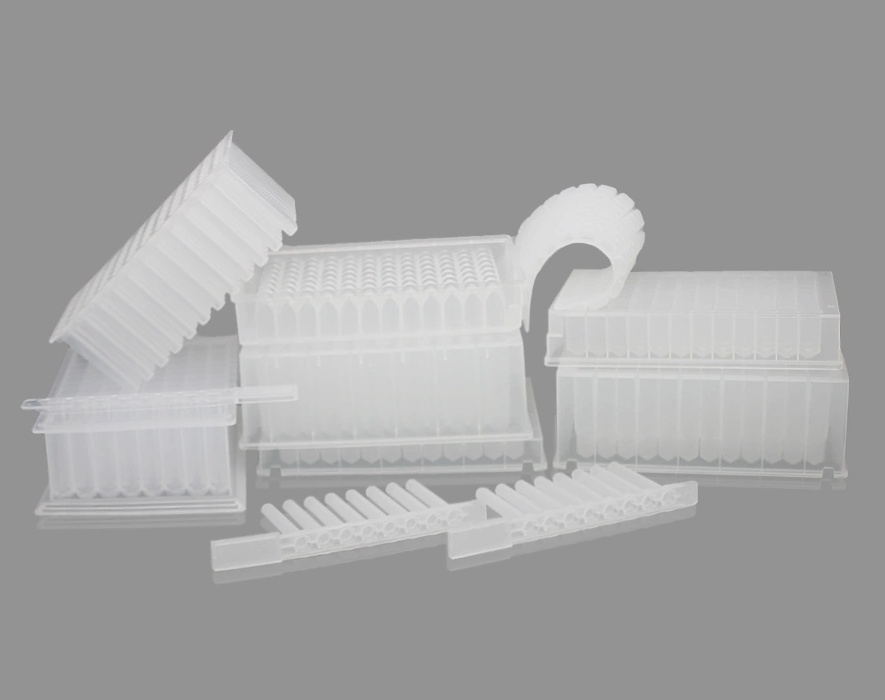Main factors affecting the screening of hematite ore dressing equipment
It is generally accepted that the sieving process is a series of probabilistic events, that is, the particles appear on the screen surface multiple times, and there is a known probability that each time a screen surface appears, that is, a particle of a known particle size passes through the sieve. The probability of the pores, and therefore the factors affecting the probability of the particles passing through the mesh, also affects the screening performance, and there are many factors that can influence the probability of the particles passing through the mesh.
First, the granularity. When the particle size is close to the mesh size, the screening efficiency is significantly reduced. The total screening efficiency is significantly reduced as the proportion of near-screen particles increases. The effect of the near-mesh particles is multifaceted because these particles tend to limit or block the mesh and reduce the effective screening area of ​​the sieve. This is the process that often occurs in the screen of the closed circuit crushing process. In the closed circuit process, the material of the near mesh is gradually increased, and the screening efficiency is gradually reduced.
Second, the feed rate. The analytical principle of sieve separation is to achieve almost complete separation using a lower feed rate and a longer sieve time. In the screening practice, considering the economic cost requires a higher feed rate, and the residence time of the material on the screen surface is reduced. At higher feed rates, a thick bed is formed on the screen surface, and the fine particles must pass through the thick layer to have the opportunity to pass further through the screen. The end result is a reduction in screening efficiency. For any separation operation, high yield and high efficiency are often two conflicting requirements. In order to get the best results, the above two indicators must be considered comprehensively.
Third, the sieve tilt angle. If the particles approach the mesh at a small angle of inclination, the "see" of the sieve is the effective pore size of the lower field, and the near-mesh particles are almost impossible to pass. The angle of inclination of the screen surface affects the angle at which the particles enter the screen. Some sieves use this action to separate finer materials than the mesh. The screen angle also affects the rate at which the particles move along the screen surface, the residence time on the screen surface, and the probability of particles passing through the screen surface.
Fourth, the shape of the particles. Most of the material particles treated on the sieve are non-spherical. When the spherical particles pass equally in all directions, the irregularly shaped near-mesh particles must pass through the mesh in a certain direction. The elongated particles and the plate-like particles have a small cross-sectional area in one direction and a large cross-sectional area in other directions. Therefore, the particle grading efficiency of the extremely irregular shape is lowered.
5. Effective screening area. The probability of passing the sieving is directly proportional to the percentage of the effective screening area of ​​the sieve. The effective screening area refers to the ratio of the area of ​​the screen to the total area of ​​the screen. The smaller the screen surface occupied by the screen material, the greater the probability that the particles will enter the screen. The effective screening area decreases as the size of the mesh decreases. Therefore, in order to increase the effective area of ​​the small-diameter sieve, it is necessary to use a fine and brittle sieve wire, but the sieve mesh is easy to wear and the treatment amount is low. This is also the reason why the fine-grained material is graded without using a fine sieve.
Sixth, vibration. In order to throw the material away from the screen surface, the screen should be vibrating, and the vibration causes the material to fall back to the screen surface and move along the screen surface. Appropriate vibration can also cause delamination of the feedstock, which causes the fines to pass through the layer and down to the screen surface, thereby causing the large particles to rise to the top. The stratification increases the throughput of the middle portion of the screen.
Seven, moisture. The surface moisture content of the ore is significantly affected by the screening efficiency, which is the same as clay and other viscous materials. Wet feedstocks are more difficult to screen and do not screen wet materials to prevent clogging of the screen openings. These measures also include the use of thermal coverings to disrupt the surface tension of the water between the screen and the material, and the use of spherical plates to create nearby vibrations in the lower portion of the screen surface, or the use of non-blocking screen weaves. Wet screens effectively screen 250um or even finer grained materials. The adhered slime can be washed down from the large ore, so the slurry flow and rinse water can rinse the sieve.
Deep well Plates are an ideal product for sample storage, we have many types of 96 Deep Well Plate, such as 0.5ml elution plate, 1.2ml square well V bottom plate, 2.0ml round well U botttom plate for Hamilton and Nunc machines, 2.2ml square well V bottom and 2.2ml square well U bottom. They can be sterilized under high press, and keep the shape for 20 minutes even the temperature arrives at 121℃,All these characteristics set a new standard for the laboratory.

96 Deep Well Plate,Polypropylene 96 Well Plate,Microplate Well,Deep-Well Plates,96 Deep Well Plate 2 ml
Yong Yue Medical Technology(Kunshan) Co.,Ltd , https://www.yonyue.com
